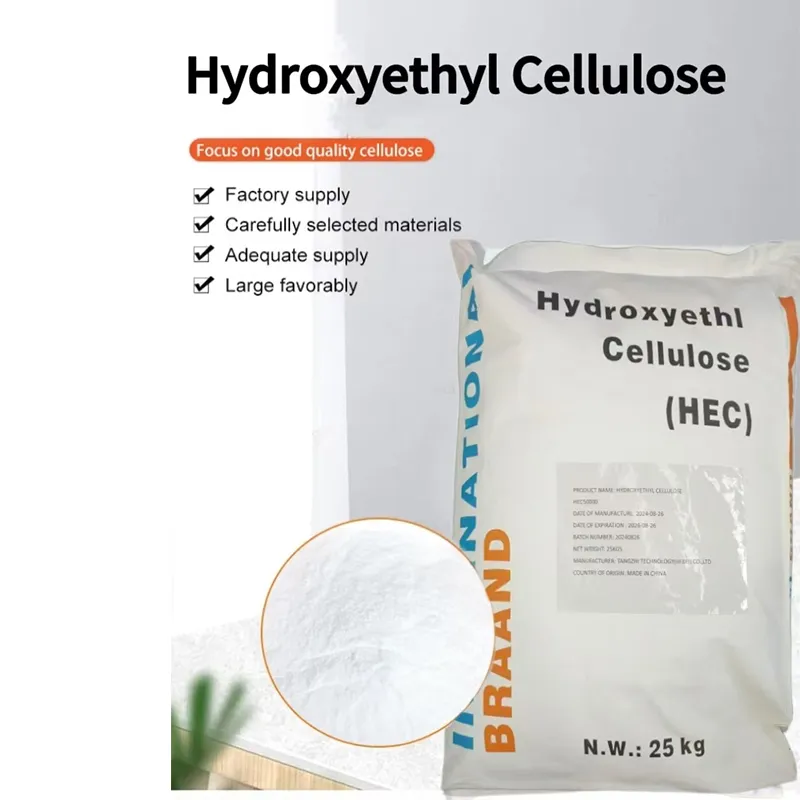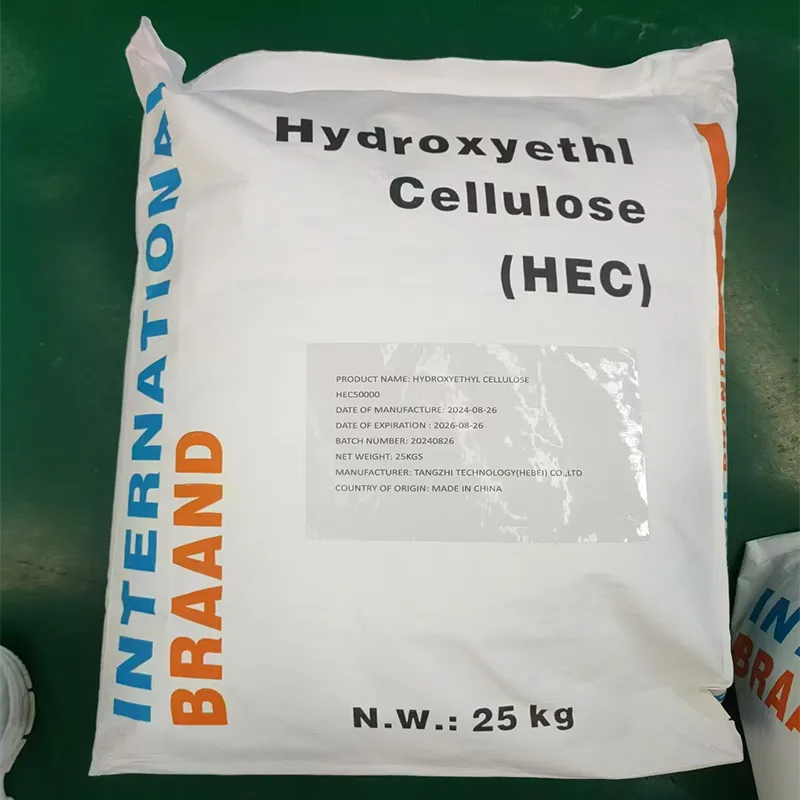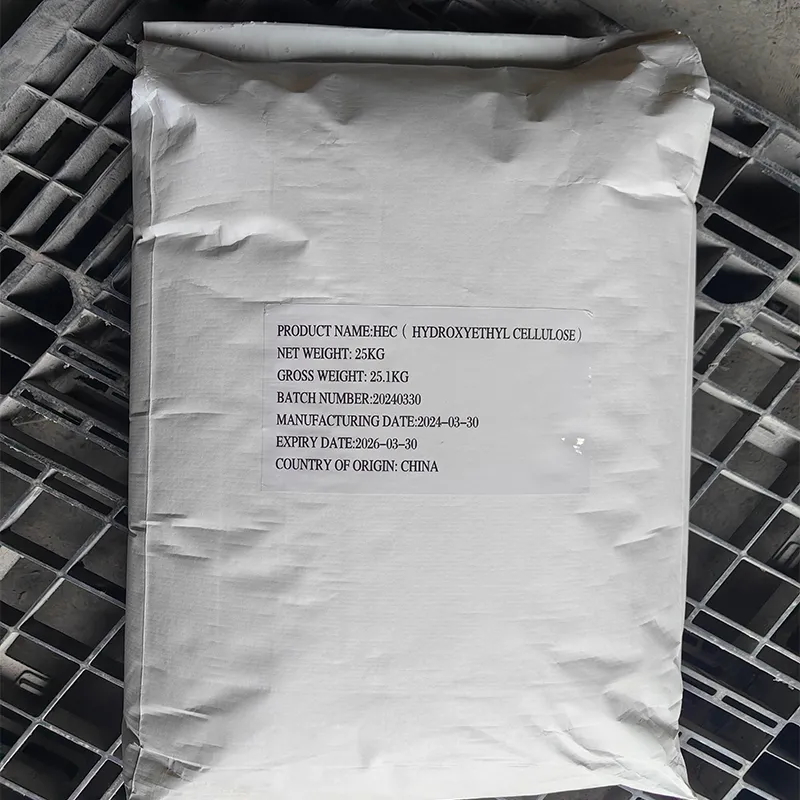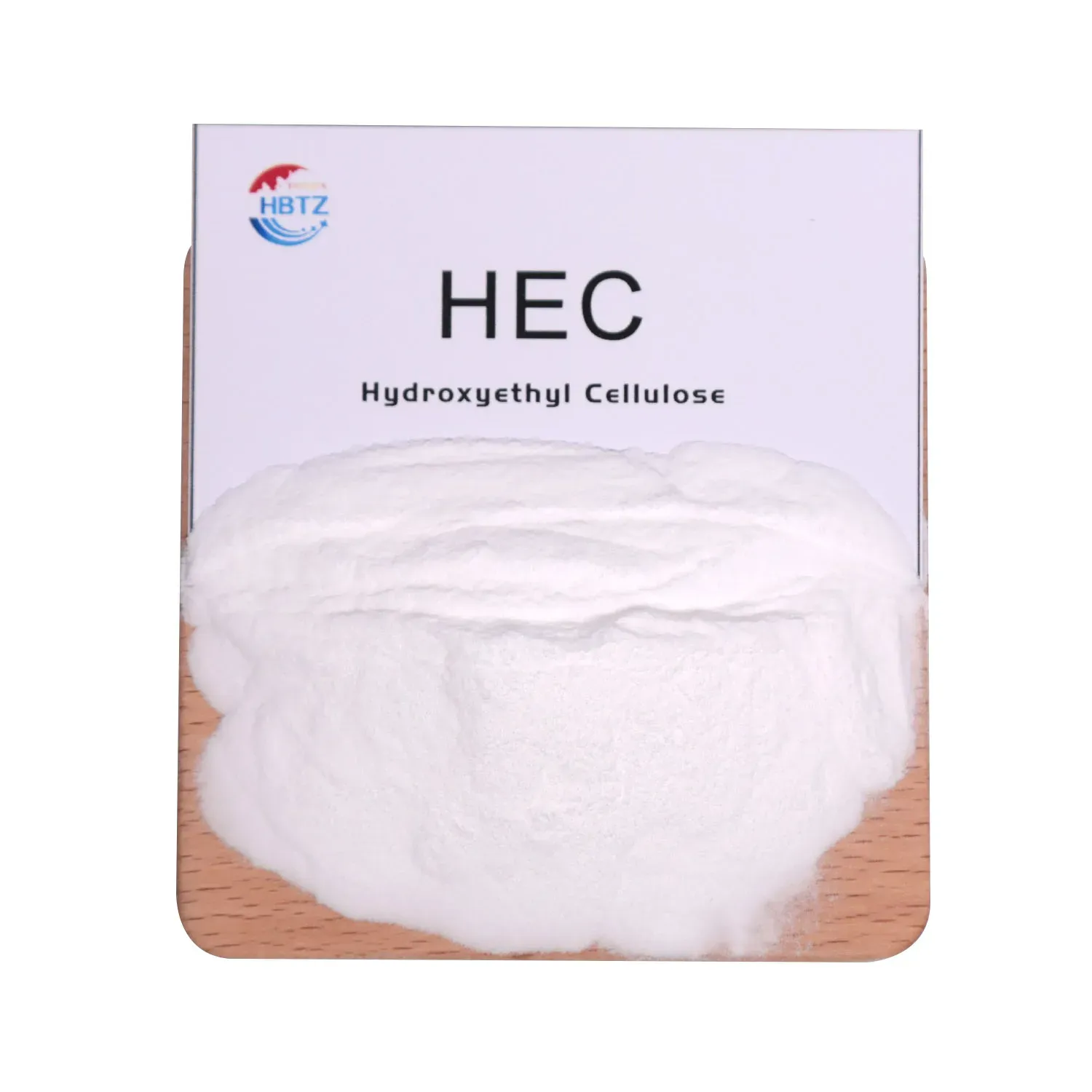
Hydroxyethyl Cellulose for Paint: Enhance Viscosity & Stability
Industry Trends and the Pivotal Role of Hydroxyethyl Cellulose (HEC) in Modern Paint Formulations
The global coatings industry is undergoing a significant transformation, driven by demands for enhanced performance, environmental sustainability, and cost-efficiency. In this dynamic landscape, the selection of raw materials plays a critical role, and among them, Hydroxyethyl Cellulose (HEC) stands out as an indispensable additive. As a non-ionic cellulose ether, HEC is renowned for its exceptional thickening, rheology modification, water retention, and suspension stabilization properties, making it a cornerstone for a vast array of water-based paints and coatings. The market for high-performance additives like HEC is experiencing steady growth, fueled by the expanding construction sector, the rising popularity of eco-friendly and low-VOC paints, and the increasing need for durable and aesthetically pleasing finishes. Paint manufacturers are consistently seeking additives that can deliver superior sag resistance, improved brushability, enhanced color development, and prolonged shelf life, all while adhering to stringent regulatory standards. The escalating focus on sustainable solutions has also driven innovation in cellulose derivatives, propelling the demand for more efficient and environmentally benign thickening agents. Understanding the nuanced capabilities of hydroxyethyl cellulose for paint applications is therefore paramount for formulators aiming to develop next-generation coating products that meet both current market needs and future challenges. This encompasses an in-depth analysis of its technical specifications, manufacturing precision, and versatile application benefits that empower paint producers to innovate and excel in a competitive market, moving towards more advanced and specialized coatings. The transition towards more sophisticated architectural and industrial coatings requires additives that offer precise control over rheological properties across varying shear rates, ensuring optimal application and film formation.
The Science and Technical Parameters of Hydroxyethyl Cellulose (HEC)
Hydroxyethyl Cellulose, often abbreviated as HEC, is a derivative of cellulose, a natural polymer, through a process of etherification with ethylene oxide. This modification introduces hydroxyethyl groups onto the cellulose backbone, enhancing its solubility in water and its thickening efficiency. The performance of HEC in paint formulations is primarily governed by its molecular weight, degree of substitution (DS), and molar substitution (MS). Higher molecular weight grades generally offer superior thickening capabilities, while the DS and MS influence properties such as solubility, enzyme resistance, and compatibility with other paint ingredients. For instance, the uniform distribution of hydroxyethyl groups along the cellulose chain ensures excellent resistance to microbial degradation, a critical factor for extending the shelf life of water-based paints. The hydroxyethyl cellulose cas number typically ranges from 9004-62-0, a standard identifier reflecting its chemical structure and composition. Understanding these fundamental parameters is crucial for selecting the appropriate HEC grade for specific paint types, whether it be a high-viscosity grade for conventional latex paints or a lower-viscosity grade for sprayable coatings. Our product offerings are meticulously engineered to provide precise rheological control, ensuring optimal performance from manufacturing to application. We provide a range of grades tailored to meet diverse viscosity and performance requirements, ensuring that formulators can achieve the desired characteristics in their final products, including excellent flow and leveling, sag resistance, and improved open time. These technical specifications are pivotal in defining how well the HEC integrates into complex paint systems and delivers consistent results, upholding the integrity and quality of the final coating product under various environmental conditions and application methods. The meticulous control over these parameters ensures the consistent quality and performance of hydroxyethyl cellulose for paint.

Key Technical Parameters for HEC in Paint
| Parameter | Description | Typical Range/Value | Impact on Paint Performance |
|---|---|---|---|
| Viscosity (2% Solution) | Measured in mPa·s, indicating thickening power. | 100-100,000 mPa·s | Dictates paint consistency, sag resistance, and brushability. |
| Molar Substitution (MS) | Average number of moles of ethylene oxide per anhydroglucose unit. | 1.5 - 3.0 | Influences water solubility, salt tolerance, and enzyme resistance. |
| Moisture Content | Residual water content in the powder. | ≤ 5% | Affects storage stability and dissolution properties. |
| Ash Content | Inorganic residue after ignition. | ≤ 3% | Indicates purity; lower is generally better for paint stability. |
| pH Value (1% Solution) | Acidity or alkalinity of its solution. | 6.0 - 8.0 | Ensures compatibility with other pH-sensitive paint ingredients. |
The Manufacturing Process of High-Quality Hydroxyethyl Cellulose (HEC)
The production of high-grade HEC suitable for paint applications is a sophisticated chemical engineering process that demands precision and stringent quality control. It typically begins with high-purity cellulose, usually derived from wood pulp or cotton linters, which undergoes a series of crucial steps to transform it into the desired cellulose ether. Initially, the cellulose is steeped in an alkaline solution, primarily sodium hydroxide, to swell the fibers and activate the hydroxyl groups, forming alkali cellulose. This crucial mercerization step increases the reactivity of the cellulose, preparing it for the subsequent etherification. Following mercerization, the alkali cellulose is reacted with ethylene oxide in a controlled environment, typically in a sealed reactor under elevated temperature and pressure. This etherification reaction introduces hydroxyethyl groups onto the cellulose backbone, converting it into hydroxyethyl cellulose. The reaction conditions, including temperature, pressure, and the molar ratio of ethylene oxide to cellulose, are meticulously controlled to achieve the desired degree of substitution and molecular weight, which directly impact the final product's viscosity and performance characteristics. Post-reaction, the crude HEC is purified through extensive washing to remove by-products such as salts and unreacted chemicals, ensuring a high purity product. This washing process is critical for achieving low ash content and optimal clarity in solution, vital for paint applications. The purified HEC is then dewatered, dried, milled to a fine powder, and sieved to various particle size distributions depending on the application requirements. Each batch undergoes rigorous quality checks conforming to international standards such as ISO 9001:2015 for quality management, ensuring consistency and reliability. Testing includes viscosity measurement, moisture content, pH, ash content, and specific performance tests relevant to paint applications like dissolution rate and solution clarity. This comprehensive manufacturing and testing protocol guarantees that our hydroxyethyl cellulose for paint consistently meets the demanding specifications of our B2B clients, providing a reliable and high-performing thickening agent for diverse coating formulations across various industries, including architectural, industrial, and specialized coatings. The meticulous control over each stage ensures that the finished product adheres to strict performance criteria, directly contributing to the superior rheology and stability of the end-use paint products.
Key Applications and Technical Advantages in Paint Formulations
The versatility of HEC makes it an essential component across various paint and coating segments, offering significant technical advantages that translate into superior product performance and application ease. In water-based architectural coatings, HEC is primarily used as a thickener and rheology modifier, providing excellent pseudoplasticity, which means the paint thins under shear (brushing, rolling, spraying) and then thickens rapidly when the shear is removed, preventing sag. This ensures optimal film build and prevents dripping or splashing during application. Furthermore, HEC contributes significantly to water retention, preventing premature drying of the paint film and ensuring proper pigment dispersion and color development. For interior and exterior latex paints, it improves open time, allowing for smoother application and better wet-edge retention, resulting in a more uniform finish. Beyond architectural paints, HEC finds critical application in industrial coatings, specialty paints, and even certain printing inks. Its ability to provide stable viscosity over a wide pH range and its compatibility with various pigments, fillers, and binders make it highly adaptable. The non-ionic nature of HEC minimizes its interaction with ionic components in the paint system, reducing the risk of flocculation and ensuring long-term stability. The enhanced sag resistance and improved leveling properties delivered by hydroxyethyl cellulose for paint formulations lead to significant benefits such as reduced labor time for application, less material waste, and a more consistent, professional finish. For instance, in high-build textured coatings, HEC ensures the retention of texture even on vertical surfaces, while in clear coats, its contribution to clarity and low foaming is highly valued. These distinct advantages solidify HEC's position as a preferred rheology modifier, supporting the development of innovative, high-performance, and sustainable coating solutions that meet the evolving demands of the global market, driving both efficiency and aesthetic appeal in diverse applications. Its contribution to spray applications also ensures consistent atomization and film thickness, enhancing productivity.

Manufacturer Comparison and Tailored Custom Solutions
When considering where to buy hydroxyethyl cellulose, discerning paint manufacturers prioritize not just competitive pricing but also consistent quality, reliable supply, and expert technical support. While many suppliers offer HEC, the difference lies in the precision of manufacturing, the purity of the product, and the ability to provide customized solutions for unique formulation challenges. Key factors for comparison include the batch-to-batch consistency of viscosity and other critical parameters, the dissolution rate of the HEC powder in water, and its compatibility with a wide range of paint raw materials. Suppliers with robust R&D capabilities and stringent quality control protocols, often certified to international standards like ISO 9001 and ISO 14001, typically offer superior products. It is essential to look for manufacturers who understand the specific rheological demands of different paint types, from high-gloss enamels to textured finishes. Our commitment extends beyond merely supplying HEC; we pride ourselves on offering bespoke solutions tailored to our clients' precise needs. Whether you require a specific viscosity profile for a novel paint system, enhanced enzyme resistance for prolonged shelf stability, or a particular particle size distribution for improved dispersibility, our technical team collaborates closely with customers to develop custom hydroxyethylcellulose based solutions. This collaborative approach ensures that our HEC not only meets but often exceeds performance expectations, optimizing paint formulations for efficiency and durability. For those seeking hydroxyethylcellulose for sale, our offering encompasses a comprehensive range of grades, each designed to address specific challenges in paint rheology, from enhancing flow and leveling to providing robust sag resistance. Our experienced technical support team is always available to provide guidance on product selection, formulation optimization, and troubleshooting, ensuring our partners achieve unparalleled success in their paint manufacturing endeavors, providing a genuine competitive advantage in a demanding market. This level of dedication to customization and support distinguishes us in the market.

Why Choose Our HEC for Your Paint Needs?
| Feature | Benefit | Our Advantage |
|---|---|---|
| Consistent Quality | Predictable paint performance batch after batch. | ISO certified manufacturing, rigorous QC, traceable batches. |
| Wide Viscosity Range | Flexibility for diverse paint formulations and applications. | Comprehensive product portfolio, from low to ultra-high viscosity. |
| Technical Expertise | Optimized formulations and troubleshooting support. | Dedicated R&D team with decades of experience in rheology. |
| Custom Solutions | Tailored HEC grades for unique paint requirements. | Collaborative development process, adapting to specific client needs. |
Real-World Application Cases and Proven Impact
The tangible benefits of incorporating high-quality HEC into paint formulations are best illustrated through real-world application cases, showcasing its transformative impact on product performance and end-user satisfaction. Consider a leading architectural paint manufacturer who faced challenges with sag resistance in their high-build interior latex paints, especially when applied in thick layers. After consulting with our technical experts, they transitioned to a specific high-viscosity grade of hydroxyethyl cellulose for paint from our product line. The result was a remarkable improvement: sag resistance on vertical surfaces increased by over 30%, while maintaining excellent flow and leveling properties, leading to a smoother, more uniform finish and significantly reducing rework for applicators. In another instance, a specialist in texture coatings struggled with inconsistent texture retention and poor open time, particularly in hot, dry climates. By integrating our enzyme-resistant HEC, which offered superior water retention and improved wet-edge properties, they observed a 25% increase in open time, allowing for more extended working periods and consistent texture patterns, even in challenging environmental conditions. Furthermore, the enhanced microbial resistance of the HEC contributed to a longer shelf life for their products, reducing inventory losses. For industrial coatings, a client producing corrosion-resistant primers required a rheology modifier that could ensure stable pigment suspension and prevent hard settling during long-term storage, without compromising sprayability. Our tailored HEC solution provided superior anti-settling properties, maintaining pigment dispersion homogeneity for over 12 months, which far exceeded their previous additive's performance. This led to fewer quality complaints, reduced production costs due to less reprocessing, and a more robust product that consistently met the stringent demands of industrial applications. These cases underscore not only the efficacy of our HEC but also our commitment to providing solutions that directly address our clients' specific pain points and enhance their competitive edge in the diverse and demanding paint market. Our ability to deliver quantifiable improvements reinforces our position as a trusted partner in the chemical industry, fostering long-term relationships through proven performance and dedicated support.
Ensuring Quality, Trust, and Comprehensive Client Support
At the core of our operations is an unwavering commitment to quality assurance and building lasting trust with our clients. Our manufacturing facilities adhere to the strictest international standards, including ISO 9001 for Quality Management Systems, ensuring that every batch of Hydroxyethyl Cellulose produced is consistent, reliable, and meets the highest purity specifications. We also comply with relevant industry certifications and regulations, demonstrating our dedication to safety, environmental responsibility, and product integrity. Before shipment, all products undergo rigorous internal testing and are accompanied by comprehensive Certificates of Analysis (CoA), providing transparent documentation of key parameters such as viscosity, moisture content, pH, and particle size. Our robust supply chain management ensures efficient and predictable delivery cycles, typically ranging from 7-14 business days for standard orders, with expedited options available for urgent requirements. We understand the critical nature of timely supply for continuous manufacturing processes, and our logistics team works tirelessly to minimize lead times and ensure on-time delivery. Furthermore, we stand by the quality of our hydroxyethylcellulose for sale with a comprehensive quality warranty, guaranteeing that our products meet the agreed-upon specifications. Should any issues arise, our dedicated customer support team is readily available for prompt assistance and technical consultation. This commitment extends to providing detailed product information, safety data sheets (SDS), and expert advice on handling, storage, and application. Our long-standing relationships with global partners, accumulated over years of service, testify to our reliability and professionalism. We believe in proactive client engagement, offering technical workshops, formulation guidance, and post-sales support to ensure our clients maximize the value of our products. This holistic approach to quality, transparency, and support reinforces our position as a preferred supplier for hydroxyethyl cellulose for paint, fostering mutual growth and success in the demanding coatings industry. Our consistent adherence to these principles ensures that our clients can confidently integrate our HEC into their critical paint formulations.

Frequently Asked Questions (FAQ)
- Q: What is the typical shelf life of HEC?
A: When stored in original, unopened packaging in a cool, dry place, HEC typically has a shelf life of 24 months from the date of manufacture. Proper storage conditions are crucial to maintain its properties. - Q: Is HEC compatible with other common paint additives?
A: Yes, HEC is a non-ionic polymer, making it highly compatible with most common paint additives, including pigments, binders, dispersants, and defoamers. Its non-ionic nature minimizes adverse interactions. - Q: How does HEC impact the drying time of paints?
A: HEC, primarily functioning as a thickener and water retention agent, can slightly extend the open time and drying time of water-based paints by slowing down water evaporation. This can be beneficial for brushability and leveling. - Q: What specific grades of HEC are best suited for spray applications?
A: For spray applications, lower viscosity grades of HEC are generally recommended as they allow for better atomization and consistent spray patterns without excessive thinning, ensuring a uniform film build.
Future Outlook and Concluding Remarks
The trajectory of the coatings industry points towards continuous innovation, driven by stricter environmental regulations, the demand for higher performance characteristics, and the increasing adoption of sustainable materials. In this evolving landscape, Hydroxyethyl Cellulose will undoubtedly retain its critical role, with ongoing research focused on developing even more advanced HEC grades that offer superior properties like enhanced salt tolerance, improved enzyme resistance, and broader compatibility with novel binder systems. The emphasis on eco-friendly formulations, particularly low-VOC and zero-VOC paints, further solidifies the position of water-soluble polymers like HEC as preferred rheology modifiers. As global markets continue to expand, particularly in emerging economies, the demand for versatile and effective paint additives will only intensify. Manufacturers who can consistently supply high-quality hydroxyethyl cellulose for paint, coupled with unparalleled technical expertise and custom solution capabilities, will be best positioned to meet these escalating demands. Our commitment to innovation, quality, and customer-centric service ensures that we remain at the forefront of HEC production, empowering paint manufacturers worldwide to formulate coatings that are not only aesthetically pleasing and durable but also sustainable and efficient. We are dedicated to pioneering advancements in cellulose ether technology to support the industry's progression towards more sophisticated and environmentally responsible coating solutions, anticipating and addressing future market needs with cutting-edge products and services, fostering long-term partnerships built on reliability and shared success. The synergy between advanced manufacturing and dedicated client support is what defines our contribution to the future of the paint industry, ensuring that our partners are always equipped with the best possible solutions to excel.
References
- Klemm, D., Philipp, B., Heinze, T., Heinze, U., & Wagenknecht, W. (1998). Comprehensive Cellulose Chemistry: Fundamentals and Applications. Wiley-VCH.
- Beyer, K., & Bähr, T. (2012). Polymer Science: An Introduction. Hanser Publishers.
- Wicks, Z. W., Jones, F. N., Pappas, S. P., & Wicks, Z. W. (2007). Organic Coatings: Science and Technology. John Wiley & Sons.
- Billmeyer, F. W. (1984). Textbook of Polymer Science. John Wiley & Sons.
-
Reliable Powdered Cellulose Supplier: Quality, Sustainability & InnovationNewsNov.24,2025
-
Find Trusted Microfibrillated Cellulose Suppliers for Sustainable Industrial SolutionsNewsNov.24,2025
-
Leading Methocel Suppliers: Quality, Innovation & Sustainability in Methylcellulose SupplyNewsNov.23,2025
-
Reliable Hydroxyethylcellulose Suppliers for Industry & Sustainability | Tangzhi HPMCNewsNov.23,2025
-
Top Ethyl Cellulose Supplier – Quality, Sustainability, and Industrial SupportNewsNov.23,2025
-
Trusted CMC Powder Suppliers for Food, Pharma & Industrial Use | Tangzhi HPMCNewsNov.22,2025





















